Apple Music started putting out Their Very Own™ list of "100 Best Albums of All Time", which just made me think, yet again, of all the terribly under-appreciated albums in this planet.
I could babble a lot about this here, but the jist of it is that there is so much music out there that to try to create any list of best/great/important/influential music will always leave out deserving mentions. And if it’s intended to be a recurring thing, well, this just moves the question to "why weren’t any of these part of last year’s one?"
So instead of just moaning about it, I decided to create my very own list. One more! How much harm could that bring. However, instead of highlighting what I believe (and yes, these are always subjective) to be the greatest albums, I’ll instead highlight albums that should simply be more widely known. I don’t intend to be prescriptive or thorough here, and I’m assuredly missing many, many more, but I think these are a good list to start with. (Yes, I might make more!)
10. E=MC² (1979) by Giorgio Moroder
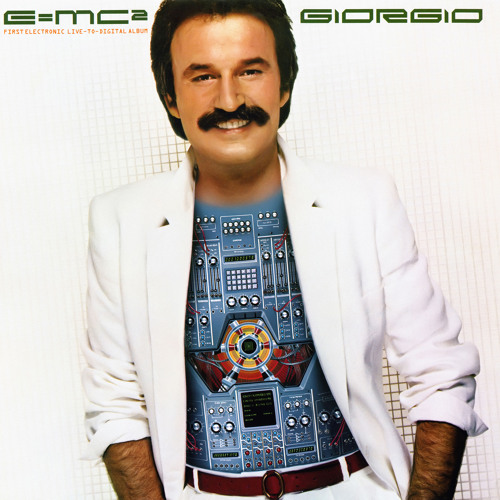 If Donna Summer is the Queen of Disco, Giorgio Moroder is the Prince Consort. Not only Moroder produced some of the most iconic Disco tracks, but he also made some music himself. This album is energetic from start to finish, as a good Disco album should be. It also features many innovations for the time, such as being recorded and mixed entirely in the digital realm using Soundstream PCM. One aspect I love about this album is that it feels very measured. As soon as a track starts feeling “done”, the next one begins. Except maybe for the opening track, but I think that’s what opening tracks are for. A track to pay special attention to is #5 (In My Wildest Dreams), which has many aspects that sound decades ahead of its time, and in fact, I feel is the track that inspired Daft Punk’s Random Access Memories (2012).
If Donna Summer is the Queen of Disco, Giorgio Moroder is the Prince Consort. Not only Moroder produced some of the most iconic Disco tracks, but he also made some music himself. This album is energetic from start to finish, as a good Disco album should be. It also features many innovations for the time, such as being recorded and mixed entirely in the digital realm using Soundstream PCM. One aspect I love about this album is that it feels very measured. As soon as a track starts feeling “done”, the next one begins. Except maybe for the opening track, but I think that’s what opening tracks are for. A track to pay special attention to is #5 (In My Wildest Dreams), which has many aspects that sound decades ahead of its time, and in fact, I feel is the track that inspired Daft Punk’s Random Access Memories (2012).
9. You And Me Both (1983) by Yazoo
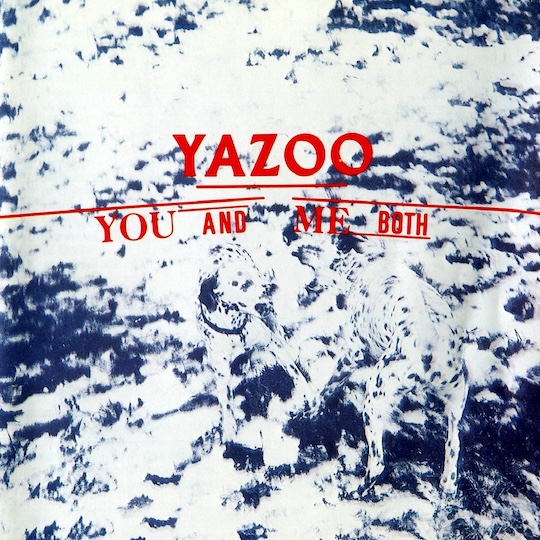 Often considered the lesser of the two albums put out by Alison Moyet and Vince Clarke’s wonderful duo, said to be because they were about to breakup (while some critics also disliked the first album – Upstairs At Eric’s – for being too early in their partnership – mind you this all happened in the space of one year), I believe this album is just as great as the first one. Topping a successful debut album is not an easy feat, and I think Yazoo definitely did that with their second album. It is just as full of introspective as well as energetic tracks, with lots of synth bits to catch your ear. The opening track is the bomb, but it’s also the only single from it, so also pay attention to #10 (Anyone), which proves that the only reason we don’t have more soulful electronic music is because we don’t want to. (Also worth mentioning that the North American release – under the group name Yaz – replaces the track Happy People with State Farm, which is one hell of a bop.)
Often considered the lesser of the two albums put out by Alison Moyet and Vince Clarke’s wonderful duo, said to be because they were about to breakup (while some critics also disliked the first album – Upstairs At Eric’s – for being too early in their partnership – mind you this all happened in the space of one year), I believe this album is just as great as the first one. Topping a successful debut album is not an easy feat, and I think Yazoo definitely did that with their second album. It is just as full of introspective as well as energetic tracks, with lots of synth bits to catch your ear. The opening track is the bomb, but it’s also the only single from it, so also pay attention to #10 (Anyone), which proves that the only reason we don’t have more soulful electronic music is because we don’t want to. (Also worth mentioning that the North American release – under the group name Yaz – replaces the track Happy People with State Farm, which is one hell of a bop.)
8. Aliens Ate My Buick (1988) by Thomas Dolby
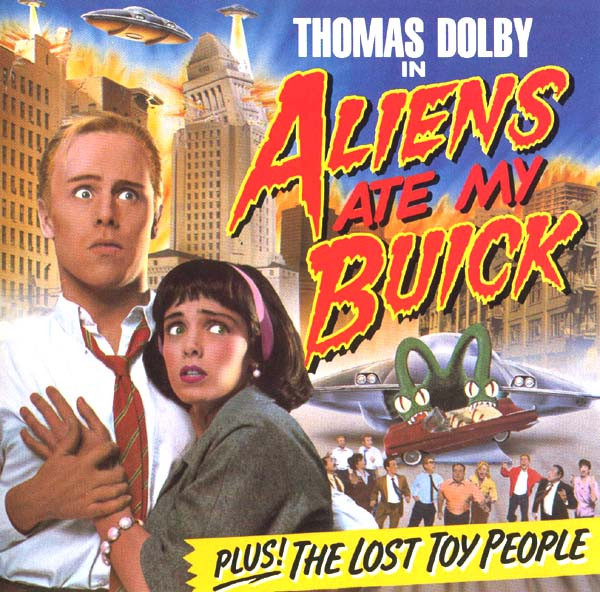 While the lead single from the album (Airhead) gets dangerously close to being problematic 36 years later (although I do believe Dolby saves his skin at the last minute with that closing verse), this entire album is full of tasty bops, one after another. The album was a commercial flop, but I attribute this entirely to the fact that a large portion of his fanbase was probably just stuck with the brainworms of his earlier hits She Blinded Me With Science and Hyperactive. Those were fine tracks, but Dolby was clearly evolving as a musician, ready to experiment (I love the jackhammer break in the middle of Hot Sauce) and also to pull from other world music influences. One track to pay special attention to is #6 (The Ability to Swing) which, once again, proves that the only reason we don’t have more soulful electronic music is because we don’t want to.
While the lead single from the album (Airhead) gets dangerously close to being problematic 36 years later (although I do believe Dolby saves his skin at the last minute with that closing verse), this entire album is full of tasty bops, one after another. The album was a commercial flop, but I attribute this entirely to the fact that a large portion of his fanbase was probably just stuck with the brainworms of his earlier hits She Blinded Me With Science and Hyperactive. Those were fine tracks, but Dolby was clearly evolving as a musician, ready to experiment (I love the jackhammer break in the middle of Hot Sauce) and also to pull from other world music influences. One track to pay special attention to is #6 (The Ability to Swing) which, once again, proves that the only reason we don’t have more soulful electronic music is because we don’t want to.
7. Soft Ware (2018) by NEWMEN
 If the music player in Brian Eno’s hospital room was playing just a tiny tad louder, perhaps this is what could have come out. All joking aside, NEWMEN is out there writing timeless music today, that you can go and listen to right now. What I love the most about this album (and also their more recent release Futur II to an extent) is that I feel it inhabits the realm of trance music without being strictly trace music. It’s the kind of music that invades every little bit of empty space in your mind and takes you along in the journey without you having to make any effort. It’s the perfect album to play in your headphones while lounging on a pool chaise. It’s hard to pick just one song from this album, so check out two of them: #4 (Physique Pictorial) and #5 (Pool Day).
If the music player in Brian Eno’s hospital room was playing just a tiny tad louder, perhaps this is what could have come out. All joking aside, NEWMEN is out there writing timeless music today, that you can go and listen to right now. What I love the most about this album (and also their more recent release Futur II to an extent) is that I feel it inhabits the realm of trance music without being strictly trace music. It’s the kind of music that invades every little bit of empty space in your mind and takes you along in the journey without you having to make any effort. It’s the perfect album to play in your headphones while lounging on a pool chaise. It’s hard to pick just one song from this album, so check out two of them: #4 (Physique Pictorial) and #5 (Pool Day).
6. 21 at 33 (1980) by Elton John
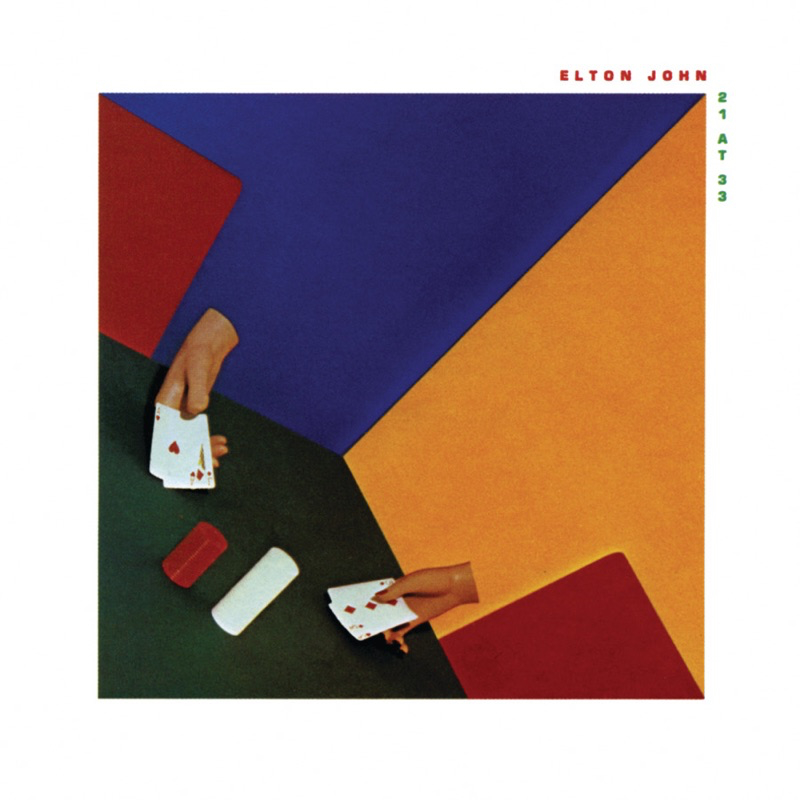 The tricky thing with being an artist as successful as Elton John is that even a list of Top 10 Elton John Albums will necessarily miss many gems. This is definitely one of them. If any other artist had put this album anytime in the 1980s, it would have likely been a massive hit. Decidedly placed in between the Disco and Pop eras, this album is a superb mix of both, with tasteful licks in every track. It also includes what is likely the most upbeat song about cocaine ever written. But I think my favorite track, and the one to pay special attention to, is the closer: #10 (Give Me The Love). The fact Elton John never played songs from this album in live concerts after touring for it is a crime.
The tricky thing with being an artist as successful as Elton John is that even a list of Top 10 Elton John Albums will necessarily miss many gems. This is definitely one of them. If any other artist had put this album anytime in the 1980s, it would have likely been a massive hit. Decidedly placed in between the Disco and Pop eras, this album is a superb mix of both, with tasteful licks in every track. It also includes what is likely the most upbeat song about cocaine ever written. But I think my favorite track, and the one to pay special attention to, is the closer: #10 (Give Me The Love). The fact Elton John never played songs from this album in live concerts after touring for it is a crime.
5. 左うでの夢 (1981) by Ryuichi Sakamoto
Hidari Ude No Yume or “Left-Handed Dream”
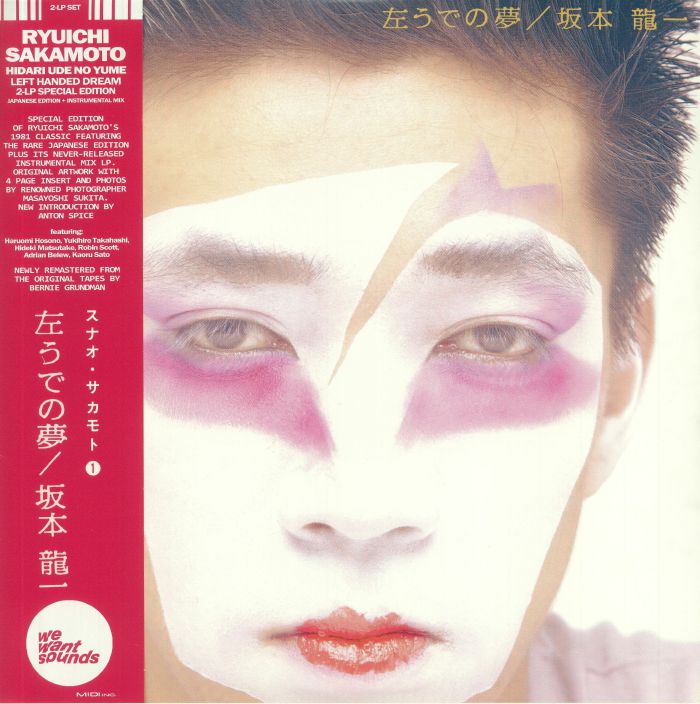 Called a “world-pop classic” by the Financial Times (that oughta count for something, right??), this album, which didn’t see a wide western issue until November 2020, is an ambitious mix of introspective and energetic tracks, often seamlessly transitioning between the two. It features a mix of Yellow Magic Orchestra’s characteristic Japanese influences with more world-oriented beats.
A track to pay special attention to is #3 (かちゃくちゃねぇ “Kachakucha Nee”), which features a sweet low frequency bass line – something that wouldn’t become a trendy thing in pop for another decade. The album closes with what can only be described as a cacophony of found sound effects, bowling balls rolling down an alley, monkey calls, steps through a corridor, the list goes on. Maybe it’s meant to represent the potential chaos that can ensue when the listener rushes to lift the damn needle off the runout groove.
Called a “world-pop classic” by the Financial Times (that oughta count for something, right??), this album, which didn’t see a wide western issue until November 2020, is an ambitious mix of introspective and energetic tracks, often seamlessly transitioning between the two. It features a mix of Yellow Magic Orchestra’s characteristic Japanese influences with more world-oriented beats.
A track to pay special attention to is #3 (かちゃくちゃねぇ “Kachakucha Nee”), which features a sweet low frequency bass line – something that wouldn’t become a trendy thing in pop for another decade. The album closes with what can only be described as a cacophony of found sound effects, bowling balls rolling down an alley, monkey calls, steps through a corridor, the list goes on. Maybe it’s meant to represent the potential chaos that can ensue when the listener rushes to lift the damn needle off the runout groove.
4. Acabou Chorare (1972) by Novos Baianos
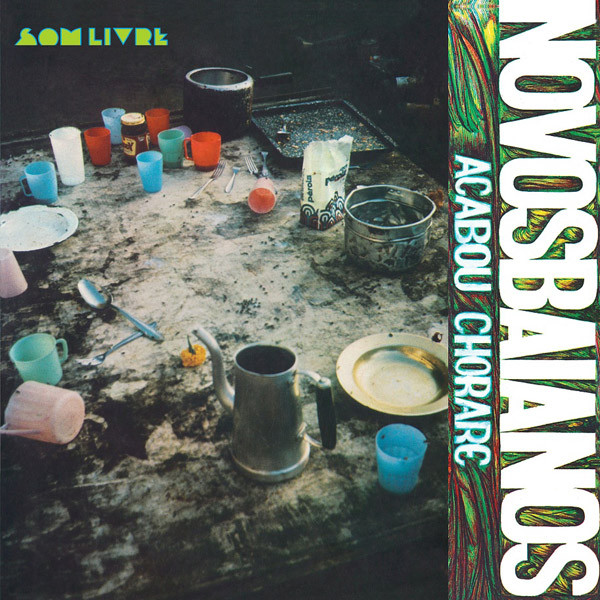 As the military dictatorship in power since 1964 squeezed the freedom of expression tighter with every passing day, popular music at the time took a toll. Although Bossa Nova may sound upbeat, most of its lyrics are as melancholic as any Portuguese Fado. By 1972, progressive musicians loosely organized under the label of “Tropicália” decided to do the same thing Bossa Novans had done one decade before and mix North American rhythms with Brazilian styles, but this time they’d take Rock’n’Roll rather than Jazz. Novos Baianos also decided to make their motive clear: Acabou Chorare translates to “No More Crying”. The album may feel like it takes a while to get going, but I think that’s the intention. They were - per se - winding up a massive cultural power once again. And it shows. This album was extremely influential in everything that came out of Brazilian music since. And because of that is also a great introduction to Brazilian sounds – other than Bossa Nova. A track to pay special attention to is #9 (Um Bilhete Para Didi), which shows off one of Brazil’s most energetic styles that isn’t samba: Baião.
As the military dictatorship in power since 1964 squeezed the freedom of expression tighter with every passing day, popular music at the time took a toll. Although Bossa Nova may sound upbeat, most of its lyrics are as melancholic as any Portuguese Fado. By 1972, progressive musicians loosely organized under the label of “Tropicália” decided to do the same thing Bossa Novans had done one decade before and mix North American rhythms with Brazilian styles, but this time they’d take Rock’n’Roll rather than Jazz. Novos Baianos also decided to make their motive clear: Acabou Chorare translates to “No More Crying”. The album may feel like it takes a while to get going, but I think that’s the intention. They were - per se - winding up a massive cultural power once again. And it shows. This album was extremely influential in everything that came out of Brazilian music since. And because of that is also a great introduction to Brazilian sounds – other than Bossa Nova. A track to pay special attention to is #9 (Um Bilhete Para Didi), which shows off one of Brazil’s most energetic styles that isn’t samba: Baião.
3. To Know Without Knowing (2020) by Mulatu Astatke & Black Jesus Experience
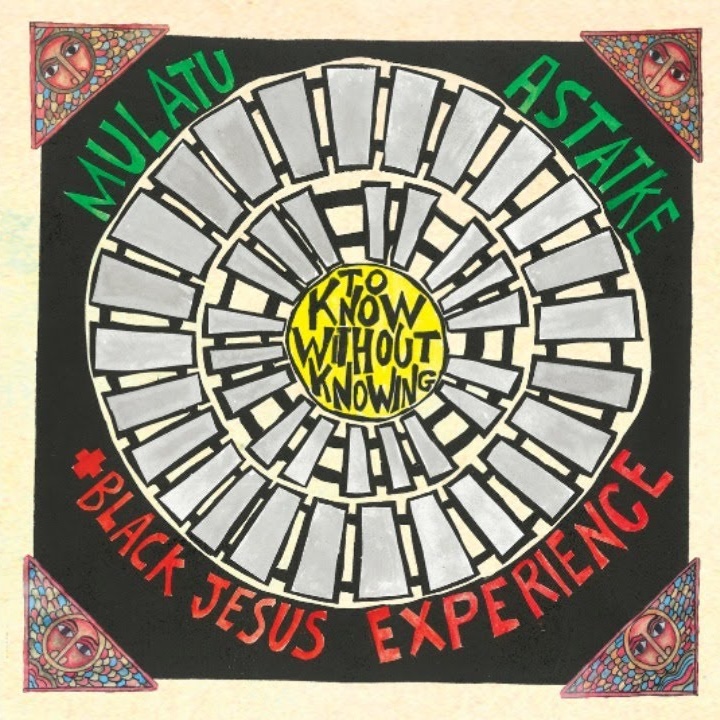 This album contains Jazz that not only matches the level of all the gods of bop from the past century, but also goes well beyond it. And it doesn’t end there. This is also an album decidedly set in and around Ethiopian music, with its beautiful vocals and intricate poly-rhythms. Spare me the 30bpm trumpet solos, I like Jazz that I can dance to, and this is decidedly that. I think for a lot of young people, me inlcuded, it can feel like Jazz is something that happened, once upon a time, when in fact it is still happening. Lots of it! This album is a great intro to some of that. Once again, it’s hard to pick a single track to focus in this album, so mainly for the beautiful vocals, check out track #2 (Ambassa Lemdi).
This album contains Jazz that not only matches the level of all the gods of bop from the past century, but also goes well beyond it. And it doesn’t end there. This is also an album decidedly set in and around Ethiopian music, with its beautiful vocals and intricate poly-rhythms. Spare me the 30bpm trumpet solos, I like Jazz that I can dance to, and this is decidedly that. I think for a lot of young people, me inlcuded, it can feel like Jazz is something that happened, once upon a time, when in fact it is still happening. Lots of it! This album is a great intro to some of that. Once again, it’s hard to pick a single track to focus in this album, so mainly for the beautiful vocals, check out track #2 (Ambassa Lemdi).
Note: Depending on the version you get, the track listing might be different.
2. The Rhythm of the Saints (1990) by Paul Simon
 After his (at the time) controversial trip to South Africa in the middle of the cultural embargo to create his most successful album Graceland (1986), Paul Simon looked for more world music to draw inspiration from, and he found it in Olodum and other African-rooted styles of Brazilian music. It was highly praised by critics at the time, and received multiple grammy nominations, but for some reason received very little airplay and is, thus, likely Paul Simon’s littlest-known album today. I find that to be an utter shame, since it is (in my opinion) his best album. Period. Not only because of the Brazilian music, which I love, but also because it is full of beautiful lyrics, and a truly symbiotic relationship with the styles he takes inspiration from. I believe every track in this album is perfect, but I’ll pick track #6 (She Moves On) as the one to pay special attention to.
After his (at the time) controversial trip to South Africa in the middle of the cultural embargo to create his most successful album Graceland (1986), Paul Simon looked for more world music to draw inspiration from, and he found it in Olodum and other African-rooted styles of Brazilian music. It was highly praised by critics at the time, and received multiple grammy nominations, but for some reason received very little airplay and is, thus, likely Paul Simon’s littlest-known album today. I find that to be an utter shame, since it is (in my opinion) his best album. Period. Not only because of the Brazilian music, which I love, but also because it is full of beautiful lyrics, and a truly symbiotic relationship with the styles he takes inspiration from. I believe every track in this album is perfect, but I’ll pick track #6 (She Moves On) as the one to pay special attention to.
1. Flaunt the Imperfection (1985) by China Crisis
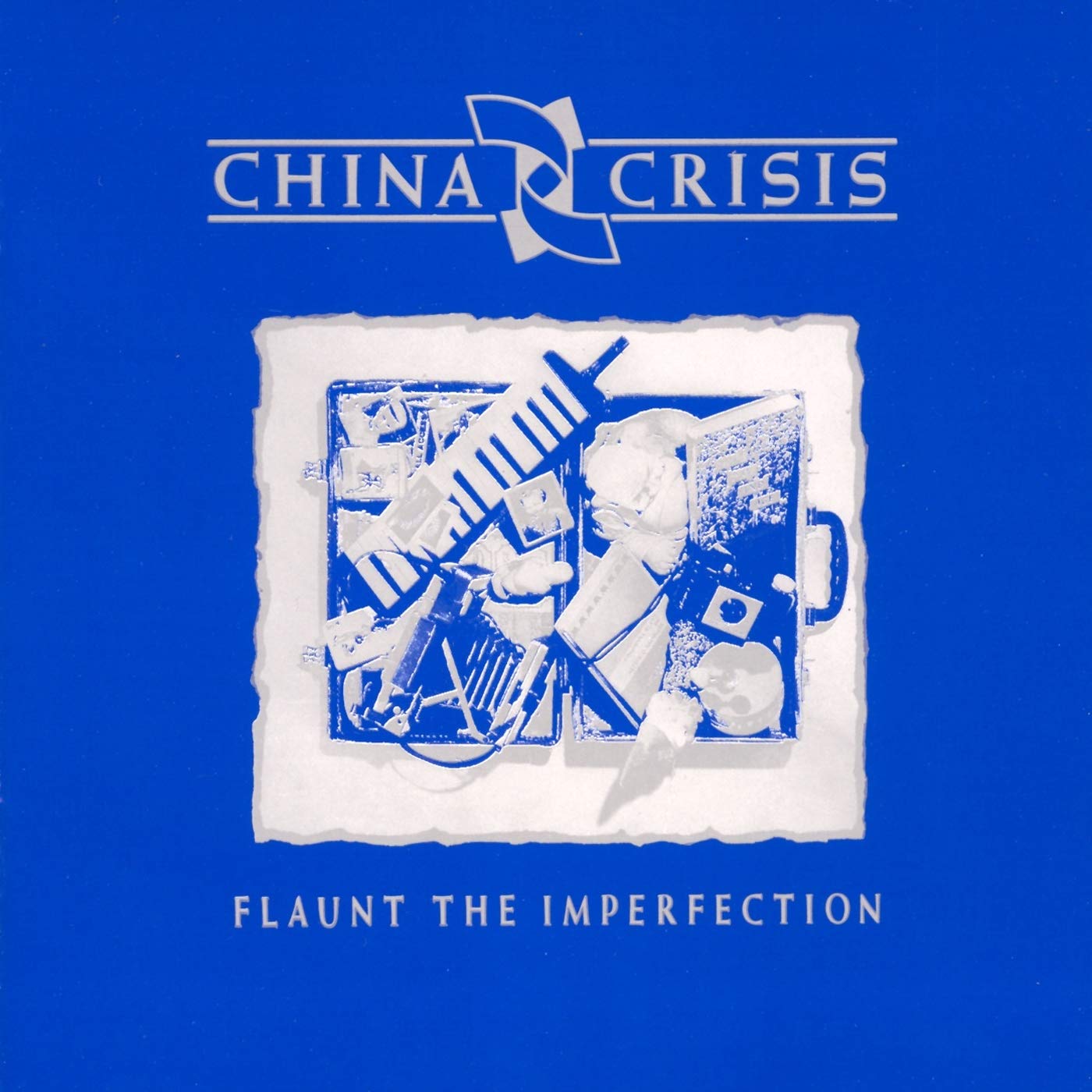 I can’t even count how many times I’ve caught myself humming, singing, recalling the lyrics, or just simply thinking about this album. There is a certain maturity in the music present here that is hard to come by, then and now. The songs talk about relationships, the feeling of belonging, human conflicts, and sharing the world we have. All that underlaid by extremely tasteful music, produced by none other than Walter Becker. I’d even go as far as to say that China Crisis is what you’d get if you took Steely Dan, subtracted the snark, added Clarice Lispector, and sprinkled in some well-measured synthesizers. A track to pay special attention to is #6 (Gift of Freedom), which sounds just as topical today as it was when it was composed. It also proves that even brassy synth sounds can sound delightful in the right hands.
I can’t even count how many times I’ve caught myself humming, singing, recalling the lyrics, or just simply thinking about this album. There is a certain maturity in the music present here that is hard to come by, then and now. The songs talk about relationships, the feeling of belonging, human conflicts, and sharing the world we have. All that underlaid by extremely tasteful music, produced by none other than Walter Becker. I’d even go as far as to say that China Crisis is what you’d get if you took Steely Dan, subtracted the snark, added Clarice Lispector, and sprinkled in some well-measured synthesizers. A track to pay special attention to is #6 (Gift of Freedom), which sounds just as topical today as it was when it was composed. It also proves that even brassy synth sounds can sound delightful in the right hands.